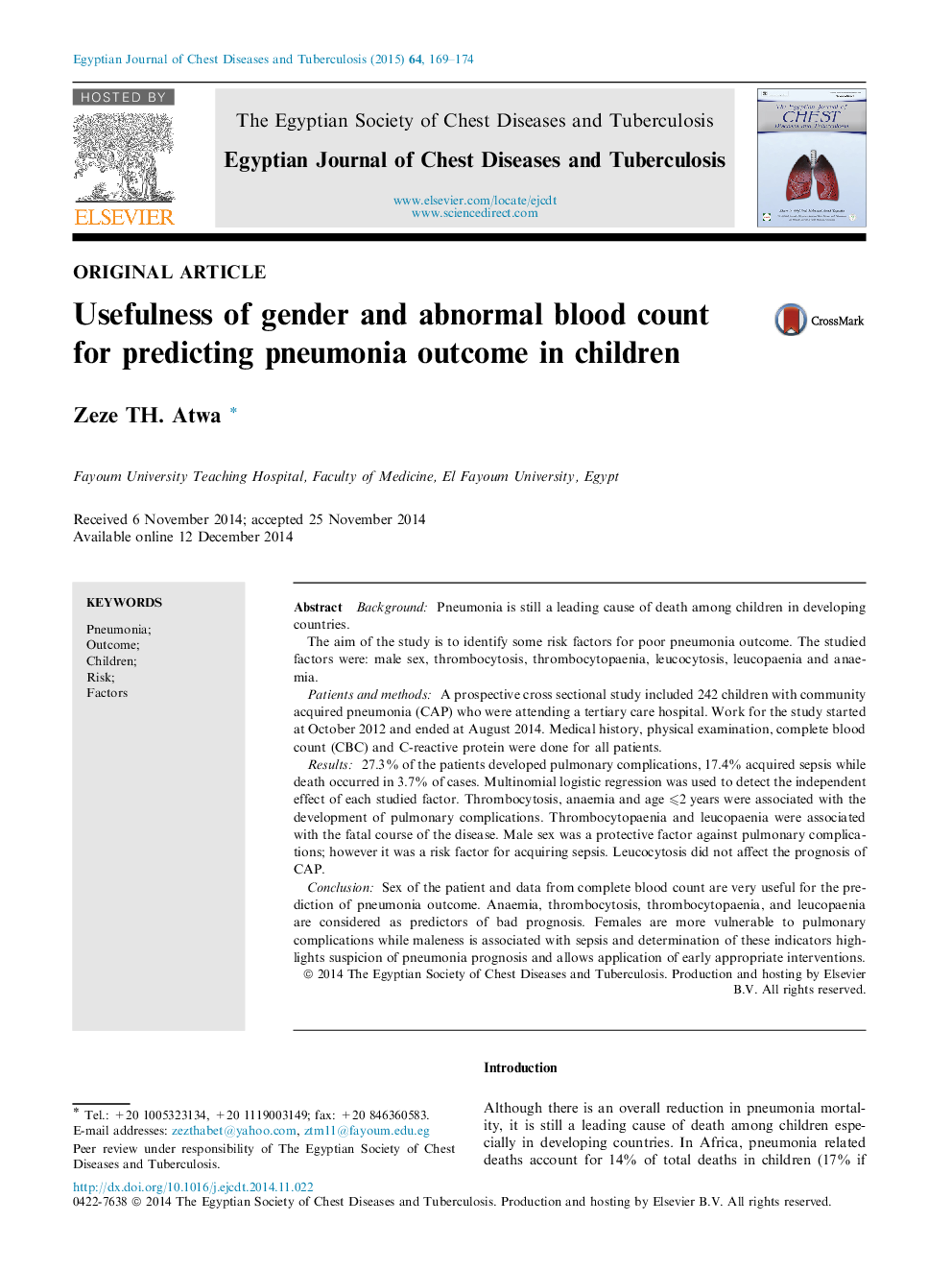| Article ID | Journal | Published Year | Pages | File Type |
|---|---|---|---|---|
| 3400102 | Egyptian Journal of Chest Diseases and Tuberculosis | 2015 | 6 Pages |
BackgroundPneumonia is still a leading cause of death among children in developing countries.The aim of the study is to identify some risk factors for poor pneumonia outcome. The studied factors were: male sex, thrombocytosis, thrombocytopaenia, leucocytosis, leucopaenia and anaemia.Patients and methodsA prospective cross sectional study included 242 children with community acquired pneumonia (CAP) who were attending a tertiary care hospital. Work for the study started at October 2012 and ended at August 2014. Medical history, physical examination, complete blood count (CBC) and C-reactive protein were done for all patients.Results27.3% of the patients developed pulmonary complications, 17.4% acquired sepsis while death occurred in 3.7% of cases. Multinomial logistic regression was used to detect the independent effect of each studied factor. Thrombocytosis, anaemia and age ⩽2 years were associated with the development of pulmonary complications. Thrombocytopaenia and leucopaenia were associated with the fatal course of the disease. Male sex was a protective factor against pulmonary complications; however it was a risk factor for acquiring sepsis. Leucocytosis did not affect the prognosis of CAP.ConclusionSex of the patient and data from complete blood count are very useful for the prediction of pneumonia outcome. Anaemia, thrombocytosis, thrombocytopaenia, and leucopaenia are considered as predictors of bad prognosis. Females are more vulnerable to pulmonary complications while maleness is associated with sepsis and determination of these indicators highlights suspicion of pneumonia prognosis and allows application of early appropriate interventions.
